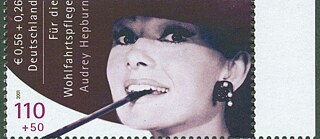Postage stamp errors
The Blue Mauritius and its Companions
Why is it precisely the flawed specimens that get stamp collectors so excited? And what has an uncle from Saxony got to do with all this? Our Havana-based colleague and author Michael Thoss has been rummaging through the world’s most valuable stamp collections and reports on errors, freaks, and oddities.
It all started when I was a teenager and an uncle from Saxony left me his collection of Third Reich stamps. In it, I stumbled across a series of blacked-out portraits of Hitler from my place of birth in the Vogtland region. They dated back to the summer of 1945, when postal services were being gradually resumed in the occupation zones following the surrender of the Nazis. Due to a lack of new postage stamps, the old stamps had to be used at first. Cork stamps, India ink, copying pencils, and other aids were used in the occupation zones to make the banned portraits of Hitler unrecognizable on the old stamps. Some, for example, had been carefully printed with the words “Germany’s corruptor,” while on others Hitler’s face had been blacked out by hand using a brush. Because the victorious powers were initially unable to agree on a unified pricing system and did not recognize their stamps across occupation zone boundaries, dozens of such local varieties were created for regional postal services in the first year after the war.
Incidentally, fake propaganda stamps featuring Hitler also existed beforehand; they had been smuggled into the postage system of the Third Reich by the Allies. The US secret service OSS, for instance, had overlaid a skull on Hitler’s face on the crimson 12 Reichspfennig stamp, replacing the words “Deutsches Reich” (i.e. German empire) with “Futsches Reich” (i.e. ruined empire). From 1937 on, stamps showing Hitler’s skull entered into circulation time and again, with the value of the stamp in pennies being replaced by small gallows.
My interest in the stamp collection I had inherited grew enormously when I learned that these defaced and essentially devalued specimens were in fact worth many times more than their original perfect counterparts. It is not original stamps in mint condition that ignite the passion of many collectors, but those deformed and reused versions that had been willfully defaced.
It is not only German stamp collectors who have a penchant for errors, freaks, and oddities, however. According to philately journals, the Swedish Tre Skilling Banco from the year 1855 was sold for a total of 2.8 million Swiss francs at David Feldmann S.A. in Geneva in 1996, making it the world’s most expensive misprint. The stamp was originally supposed to be printed on blue-green paper but someone made the mistake of using yellow paper instead. What is presumed to be the last specimen from the series was reportedly acquired by a Swedish dealer on behalf of an anonymous collector.
Such errors still happen today, as seen in 2016 with a German Christmas stamp that was never officially issued. Approximately 25 defective specimens ended up in circulation nonetheless and have considerable potential value; comparable to the Audrey Hepburn charity stamp that was withdrawn in 2001 and four years later fetched 135,000 euros at auction.
Incidentally, the world’s most valuable stamp is NOT a color misprint or other error, nor is it the legendary Blue Mauritius. The most expensive postage stamp is known as the “British Guiana 1c Magenta.” Its history is also attributable to an error, however: in 1856, the planned shipment of stamps from London to British Guiana in South America was cancelled, with the result that the post office in the then British colony took matters into its own hands and created this one-cent stamp. In June 2014, this unique thumb-sized stamp, nicknamed the “Mount Everest of the stamp world,” was sold at auction at Sotheby’s in New York for 9.5 million dollars after a bidding war lasting just five minutes. Its surge in value may be related to the fact that it was able to fill a gap in the world’s most extensive collection of British Empire stamps – that of the English royal family.
Incidentally, fake propaganda stamps featuring Hitler also existed beforehand; they had been smuggled into the postage system of the Third Reich by the Allies. The US secret service OSS, for instance, had overlaid a skull on Hitler’s face on the crimson 12 Reichspfennig stamp, replacing the words “Deutsches Reich” (i.e. German empire) with “Futsches Reich” (i.e. ruined empire). From 1937 on, stamps showing Hitler’s skull entered into circulation time and again, with the value of the stamp in pennies being replaced by small gallows.
My interest in the stamp collection I had inherited grew enormously when I learned that these defaced and essentially devalued specimens were in fact worth many times more than their original perfect counterparts. It is not original stamps in mint condition that ignite the passion of many collectors, but those deformed and reused versions that had been willfully defaced.
The most famous German misprint comes from Baden
Ever since postage stamps were first introduced in Great Britain in the year 1840, flawed specimens, also known as “errors, freaks, and oddities,” have excited collectors time and again. One famous example is the misprint of a 9 Kreuzer stamp dating from 1851, which is one of the first editions of postage stamps issued in the historical German state of Baden. It was printed on a blue-green background rather than on pinkish-violet paper, just like the 6 Kreuzer stamp that appeared at the same time. Only three postmarked examples of this color misprint – which was only detected 43 years (!) after its issue – are known to exist worldwide. In 1894, one of these stamps on a letter addressed to Baden diplomat Hans Freiherr von Türckheim in Karlsruhe was sold at a London auction house for 100 pounds sterling. In 1985, the then head of the Tengelmann Group acquired it for his collection and was willing to pay a total of 3.8 million Deutschmarks (sales price plus surcharge). As a result, the Baden 9 Kreuzer misprint became the most expensive German postage stamp.It is not only German stamp collectors who have a penchant for errors, freaks, and oddities, however. According to philately journals, the Swedish Tre Skilling Banco from the year 1855 was sold for a total of 2.8 million Swiss francs at David Feldmann S.A. in Geneva in 1996, making it the world’s most expensive misprint. The stamp was originally supposed to be printed on blue-green paper but someone made the mistake of using yellow paper instead. What is presumed to be the last specimen from the series was reportedly acquired by a Swedish dealer on behalf of an anonymous collector.
The world’s most valuable stamp comes from South America
So how do misprints occur, and what do philatelists around the world find so fascinating about these “errors, freaks, and oddities”? For one thing, the variety of deviations in printing, perforation, and gumming is amazing and, in some cases, can increase the stamp’s value considerably. Technical defects or the incorrect operation of printing machines, for example, can produce errors that result in the image on the stamp being inverted, printed upside down, or in a distorted fashion on the back of the stamp. Missing or doubled overprints and, above all, color errors are extremely popular among collectors. Collectors are particularly passionate about defective specimens that belong to one and the same series but stand out like a sore thumb on account of their appearance. Whereas immaculate and flawlessly mass-produced postage stamps in mint condition are determined by the value printed upon them, the worth of a rare or unique collector’s item grows as a result of its imperfection. The anonymous person responsible for the error unknowingly created an object of obsession.Such errors still happen today, as seen in 2016 with a German Christmas stamp that was never officially issued. Approximately 25 defective specimens ended up in circulation nonetheless and have considerable potential value; comparable to the Audrey Hepburn charity stamp that was withdrawn in 2001 and four years later fetched 135,000 euros at auction.
Incidentally, the world’s most valuable stamp is NOT a color misprint or other error, nor is it the legendary Blue Mauritius. The most expensive postage stamp is known as the “British Guiana 1c Magenta.” Its history is also attributable to an error, however: in 1856, the planned shipment of stamps from London to British Guiana in South America was cancelled, with the result that the post office in the then British colony took matters into its own hands and created this one-cent stamp. In June 2014, this unique thumb-sized stamp, nicknamed the “Mount Everest of the stamp world,” was sold at auction at Sotheby’s in New York for 9.5 million dollars after a bidding war lasting just five minutes. Its surge in value may be related to the fact that it was able to fill a gap in the world’s most extensive collection of British Empire stamps – that of the English royal family.


